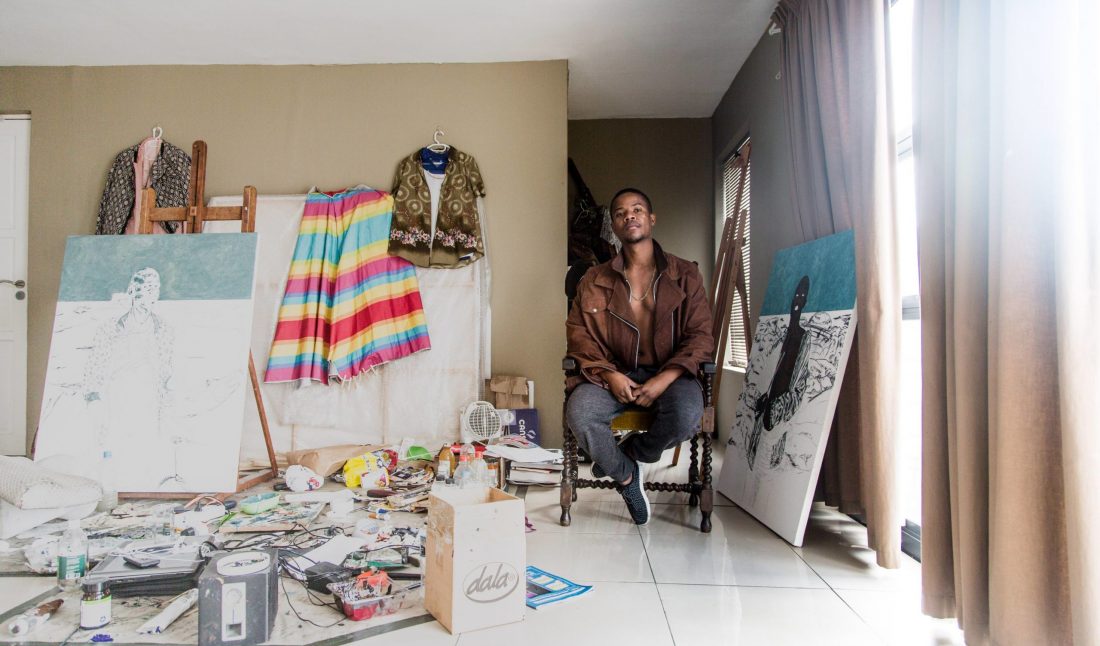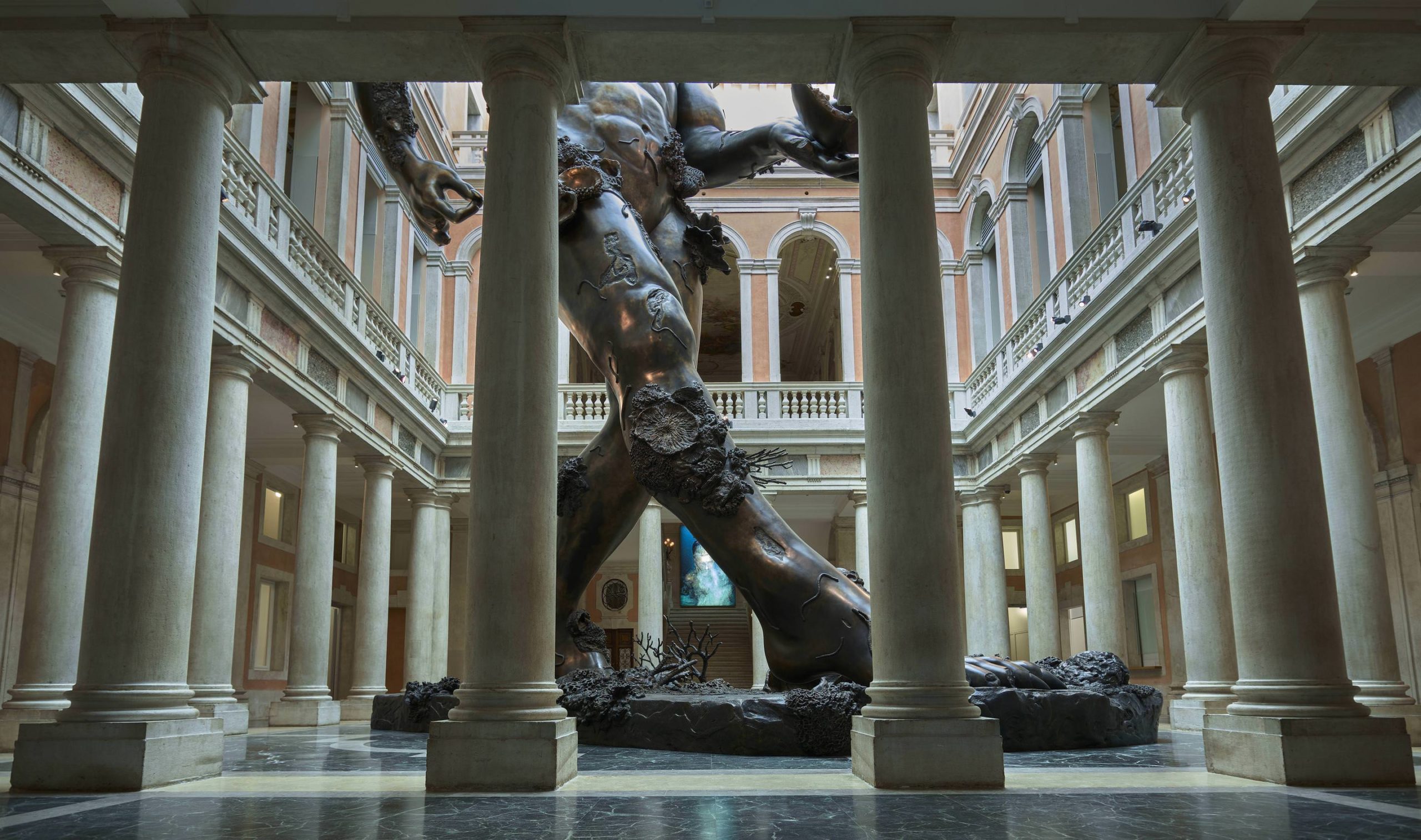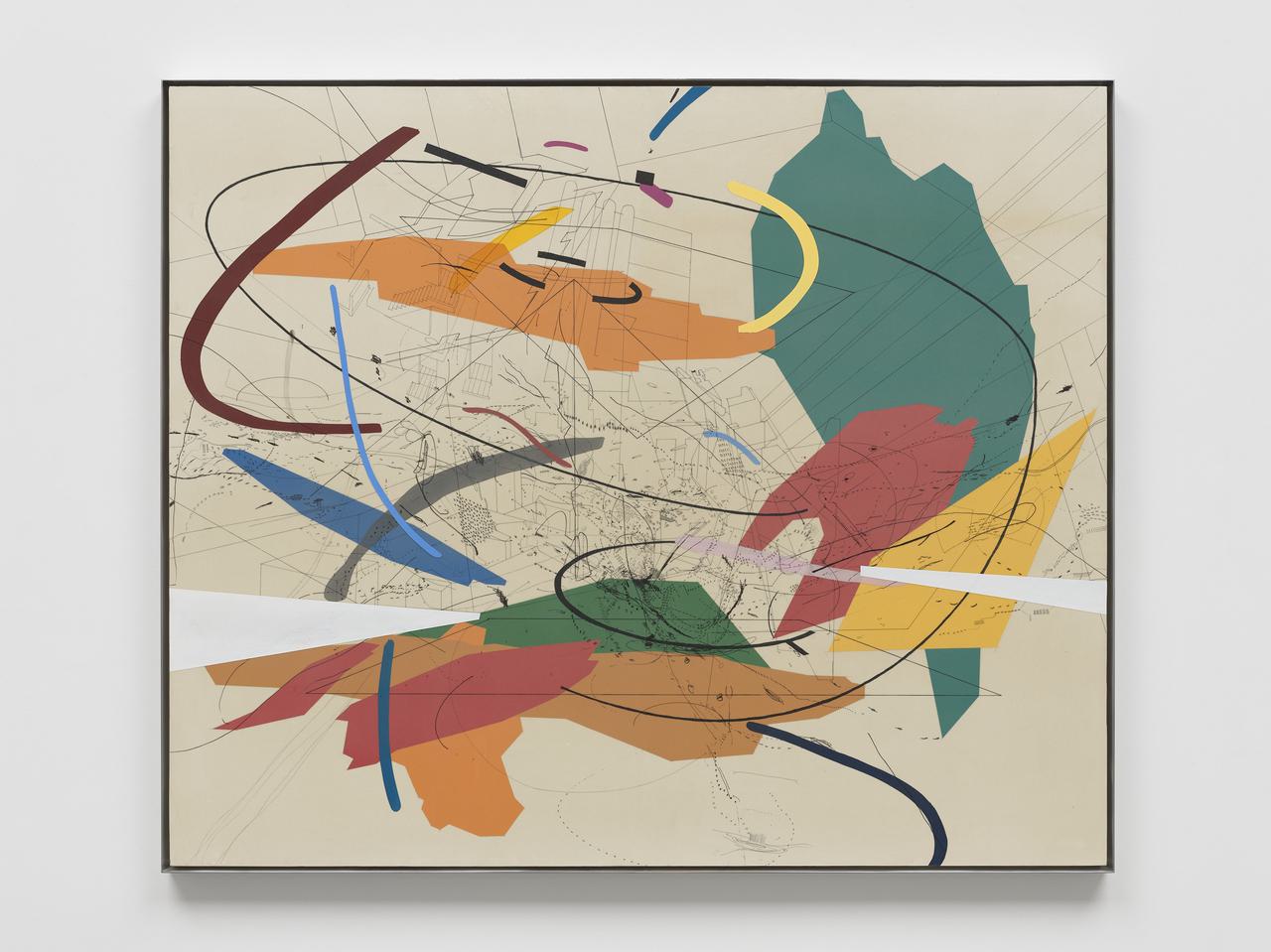Cinga Samson’s latest paintings depict young African men, posed with confidence, dressed in luxury-labeled clothes and jewelry, and holding flowers, fans, and shoes against more traditional landscape backgrounds. Their eyes painted in white, the portraits are both celebratory and haunting.
For the new series, the Cape Town–based artist set out to create a positive depiction of his generation of youth in South Africa, and the continent at large. It was in reaction to feeling frustrated and preoccupied with the political climate.
The tone of Samson’s work is imbued with a sense of spirituality, an aspect of his own life he has delved into more deeply for his upcoming exhibition this year at Blank Projects in Cape Town. When we spoke with Samson, he had just returned from the Eastern Cape of South Africa, where he had been working on that show with his brother.
WHITEWALL: How did you start painting?
CINGA SAMSON: As a child, I was always excited about drawing as well. When I was 21, I bumped into a studio in Khayelitsha, where I was staying at that time, a local studio. It was my first time being in one. It had three artists who were painters, and I was taken from that point.
At the time I didn’t know what was really going on. I didn’t have an exposure to the industry itself. I didn’t even know there was an art industry. But my instinct drew me there. It came at a time when I was thinking about what road to take in life. So when I bumped into that studio, I knew this is what I want to do. I didn’t know what it meant, but I knew this is what I want to spend my life doing. It was nothing flashy or glamorous. It had the smell of oil paint, enamel paint, and that’s what drew me into making art.
I was just excited by painting. They gave me a chance to do what I could do. I had no restrictions. There were no rules. They opened a space for me—it was quite exciting for me.
WW: What was the first series you made that really clicked for you?
CS: Every body of work I have created, I’ve always felt that, whether there has been a positive response from the audience or there hasn’t. I’ve always been passionate about the moment of creativity at the time, and I’ve always believed in it.
I would say there was a body of work I created in 2014 where I felt I was at the peak of something. And something else, totally different, came out afterward. I exhibited those works at Blank Projects gallery, in “Thirty Pieces of Silver.” They were kind of old, humanoid figures that were in it.
After those works, I could not push that energy any further.
WW: The next year, you created the “Scent of Flowers” series, which was a bit more abstract. Can you tell us about that?
CS: In 2012, I started doing traditional still lives of flowers and vases and fruits. When I did that body of work in 2015 I had this imagination of creating flowers that are burnt, leaving charcoal marks. I had this outline, this drawing of still life flowers in a vase, which were drawn in charcoal, on a dry brownish surface.
WW: Was there an emotion you wanted to tap into with an image of burnt flowers?
CS: There’s a link I’ve found between me and the still lifes. I spent my earlier ages with my biological mother, who used to pick up flowers in the yard and put them in the vase. Years later, I left my mom to stay with my father and stepmother. She also had flowers all around. She had a love of flowers, and she still does. I was tapping into that memory. It was a genuine response that was not overthought.
At that time, I didn’t feel the beauty. I didn’t feel that thing that draws you into the flowers themselves. Having them burnt, having them as ashes, made sense. I didn’t see much to celebrate at that time.
WW: Your more recent works are celebratory, however. What changed?
CS: After that period of doing those flowers, I entered into a phase where I stopped looking outside. I stopped looking at what is happening politically, our colonial history, and apartheid history. I looked more into “Who am I?” I realized I can spend my entire life complaining about things, not celebrating me as a young brown boy. There was a turn from 2016, after that show in there was a turn that happened to me. I felt it was important to start to celebrate myself and project more about what it is that I enjoy, about me, or what really makes me—elements that make me, as an African, as a young man, and as a an artist.
So I started projecting those celebratory thoughts. Perhaps thinking it could have a positive effect on others. All that has happened is not who we are, it is just what has happened. There is more to being an African, being a black young man in the continent. I wanted to give more than images of poverty. Those images are important and relevant but project only one side.
WW: How did you want to show that celebration of youth and of African men?
CS: By showing ambitions, perhaps in simple ways, in a brand of clothing. And also by not neglecting the spiritual element that almost every African has been brought up under. Africans are people who believe in ancestors, in things that are not necessarily tangible or physical. So it is also bringing that energy to that artwork.
I wanted to show the idea that we love to look good. We do look good. We’re sexy sometimes. We love genuine things. And as a young person, sometimes your idea of what is genuine is luxury brands. That is not necessarily true, but that’s a young way of thinking. I’m putting that out there, putting one’s stamp on that, emphasizing those clothes and being in a specific pose that is sensual, yet again putting the mystery in the work. I put that energy in the pieces I created. It’s been a way of celebrating all that.
WW: What are you currently working on?
CS: I’m collaborating with my brother for a show this year at Blank Projects. We’ve been having conversations about spirituality. He’s had a lot of spiritual experiences. I have had a lot of spiritual experiences myself. We were talking about water and the spirit in the water.
Years ago, our later mother used to go to our aunt’s house to attend a ceremony of a shamaness. She would come back after that ceremony and she would tell us stories about the spiritual realm in the water. There’s a belief that there’s a world under the water. We took that as an entry point to this exhibition.
On the Eastern Cape, we went to homes to find men who were there with their families, providing for them. We brought pots to exchange with them to say they could keep doing this great work. These are people who are making means of living in a very humble way. These men have tried their best to do well. We mean to show that to be a man does not mean to be abusive.
It will manifest in the form of paintings, and we will also exhibit the pots we exchanged as a symbol of men who have worked and provided and tried their best.
My work is a celebration. I strongly believe that African people are beautiful people.











